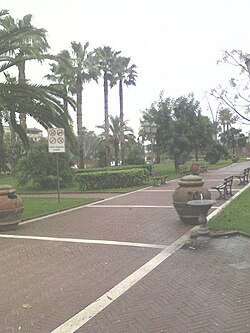
The province of Avellino is a province in the Campania region of Italy. Its capital is the city of Avellino. The area is characterized by numerous small towns and villages scattered across the province; only two towns have a population over 20,000.
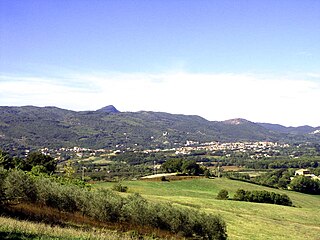
The province of Caserta is a province in the Campania region of Italy. Its capital is the city of Caserta, situated about 36 kilometres (22 mi) by road north of Naples. The province has an area of 2,651.35 square kilometres (1,023.69 sq mi), and had a total population of 924,414 in 2016. The Palace of Caserta is located near to the city, a former royal residence which was constructed for the Bourbon kings of Naples. It was the largest palace and one of the largest buildings erected in Europe during the 18th century. In 1997, the palace was designated a UNESCO World Heritage Site.

The province of Campobasso is a province in the Molise region of Italy. Its capital is the city of Campobasso. It covers an area of c. 2,941 square kilometres (1,136 sq mi) and has a total population of 223,871 (2017). There are 84 comuni in the province.

Circumvesuviana is a railway network in the east of the Naples metropolitan area, previously run by a company of the same name, now operated by Ente Autonomo Volturno. Electrically powered throughout, the system uses the narrow gauge of 950 mm and operates 142 km (88 mi) of route on six lines. It is entirely separate from other national and regional railway lines. It has 96 stations with an average interstation distance of 1.5 km (0.9 mi).

Venafro is a comune in the province of Isernia, region of Molise, Italy. It has a population of 11,079, having expanded quickly in the post-war period.

Montemarano is a town and comune, former Latin bishopric and present titular see in the province of Avellino in the Campania region of southern Italy.

Casalbore is a town and comune in the province of Avellino, Campania, Italy.

Aquara is a town and comune in the province of Salerno in the Campania region of south-western Italy.
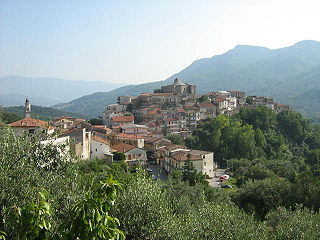
Rofrano is a town and comune of the province of Salerno in the Campania region of south-west Italy. It is located in the southern Cilento. In 2015 its population was 1,539.

Scafati is a comune (municipality) in the province of Salerno, in the Italian region of Campania.
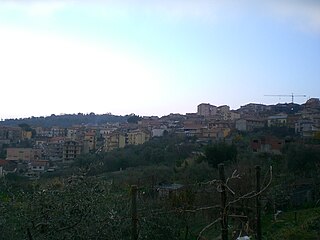
Serre is a town and comune in the province of Salerno in the Campania region of south-western Italy.

Tavullia is a comune (municipality) in the Province of Pesaro and Urbino in the Marche region of Italy, located about 70 kilometres (43 mi) northwest of Ancona and about 15 kilometres (9 mi) southwest of Pesaro. Until 13 December 1938, it was known as Tomba di Pesaro.
San Cipriano d'Aversa is an Italian commune and municipality in the Province of Caserta, region of Campania, located about 20 kilometres (12 mi) northwest of Naples and about 20 kilometres (12 mi) southwest of Caserta. The town is located on the territory of Agro aversano, a rural area with 19 comunes spread on its land, and is directly linked to the comune of Casal di Principe on a side, to the comune of Casapesenna on the other side.
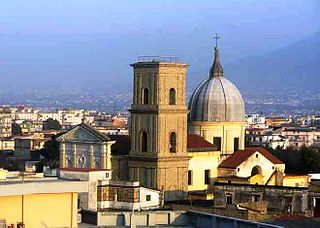
Casoria is a comune (municipality) in the Metropolitan City of Naples in the Italian region Campania, located about 5 kilometres northeast of Naples.
Palma Campania, known until 1863 as Palma di Nola, is a comune (municipality) in the Metropolitan City of Naples in the Italian region Campania, located about 25 km east of Naples.
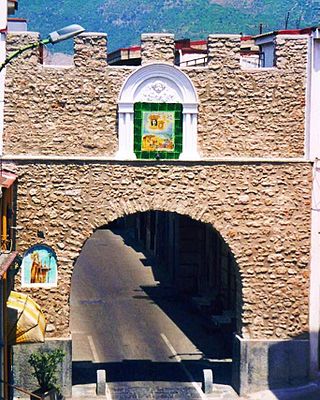
Striano is a comune (municipality) in the Metropolitan City of Naples, Campania, southern Italy.

The Naples–Salerno high-speed railway line is a link in the Italian high-speed rail network opened in June 2008. The 29-kilometre-long (18 mi) line is one of the new high-speed lines being built to strengthen rail transport system in Italy and in particular freight and passenger transport in Campania. The line is part of Corridor 1 of the European Union's Trans-European high-speed rail network, which connects Berlin and Palermo.
San Valentino can refer to Saint Valentine, ancient Roman saint.
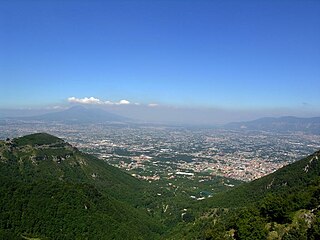
The Agro Nocerino-Sarnese, also inverted as Agro Sarnese-Nocerino, is a geographical region of the Province of Salerno, in Campania in southern Italy; the river Sarno flows through it. It is a low-lying area bounded to the south by the Monti Lattari, to the east and north-east by the Monti Picentini and to the west by the plain of Vesuvius. It consists of sixteen comuni: Angri, Bracigliano, Castel San Giorgio, Corbara, Nocera Inferiore, Nocera Superiore, Pagani, Roccapiemonte, San Marzano sul Sarno, San Valentino Torio, Santa Maria la Carità, Sant'Antonio Abate, Sant'Egidio del Monte Albino, Sarno, Scafati and Siano. All are in the province of Salerno except Santa Maria la Carità and Sant'Antonio Abate, which are in the province of Naples.
Cesina is a toponym of Langobard origin that is used in southern Italy, especially in Campania. It derives from the Latin word caesi and the Latin verb caedere, to which the Langobard suffix -na is added.
